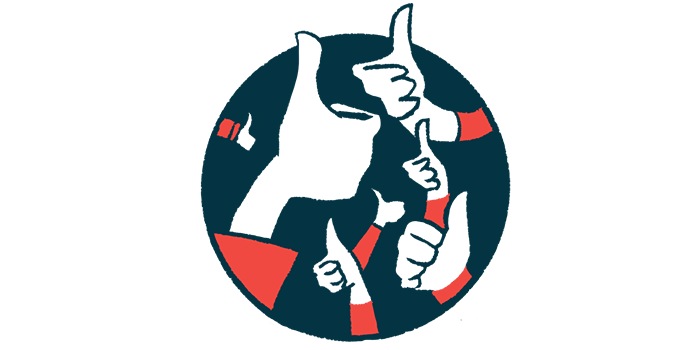Takhzyro approved in Europe for HAE patients as young as 2
Takhzyro becomes 1st prophylaxis for HAE patients younger than 6 in EU
Written by |

The European Commission has expanded the approval of Takhzyro (lanadelumab) to include children with hereditary angioedema (HAE) as young as 2 years of age.
This makes Takhzyro the first routine preventive, or prophylactic, treatment for HAE attacks to be approved for patients younger than 6 in the European Economic Area, which includes European Union countries, as well as Iceland, Liechtenstein, and Norway.
The approval comes on the heels of a positive opinion from the Committee for Medicinal Products for Human Use, an arm of the European Medicines Agency, following a similar move in the U.S. earlier this year.
“With this expanded label, Takhzyro offers a welcomed new preventative treatment option for the paediatric HAE patient population, and one that can be administered at home with the support of a trained caregiver,” Didier Relin, head of international regulatory affairs at Takeda, the company that markets Takhzyro, said in a company press release.
Potentially life-threatening HAE swelling attacks can happen early in childhood
HAE is a rare genetic condition marked by the excessive production of a pro-inflammatory molecule called bradykinin, resulting in recurring swelling attacks in various parts of the body, including the face, abdomen, hands, feet, genitals, and throat. Such attacks can happen very early in childhood and have the potential to block the airways, which can be life-threatening.
“Potentially fatal upper airway angioedema has been reported in patients as young as 3 years old, presenting an acute unmet need in some of the most vulnerable of HAE patients,” Relin said.
Takhzyro is designed to block the activity of kallikrein, a protein that regulates bradykinin production, thereby reducing the levels of bradykinin and the frequency of swelling attacks. The therapy is intended to be self-administered, via under-the-skin (subcutaneous) injections, or given by a caregiver, after proper training from a healthcare professional.
Takhzyro has been available in Europe since 2018 for adults and adolescents ages 12 and older. In this patient population, the recommended starting dose is 300 mg every two weeks, which can be lowered to once every four weeks for those who remain attack-free.
This new European label extension is paired with the release of a 150 mg formulation of Takhzyro supplied in pre-filled syringes, which is intended for patients 2 years and older and weighing less than 40 kg (about 88 pounds).
This label extension was supported by data from the Phase 3 SPRING clinical trial (NCT04070326), which assessed the safety, clinical activity, and pharmacological properties of Takhzyro in 21 HAE children, ages 2 to 11, for up to one year.
Children ages 2-5 started at 150 mg every four weeks, while older children were treated with 150 mg every two weeks.
Most children were free of swelling attacks after 1 year
Data showed 16 children (76.2%) were free of swelling attacks after one year, with the monthly rate of swelling attacks dropping by 94.8% (from a mean of 1.84 to 0.08). On average, patients were attack-free 99.5% of the time, which was similar across all dosing regimens.
The therapy was generally well tolerated. Reported treatment-related side effects included injection site reactions, such as pain, redness, and swelling.
Data extrapolated from the Phase 3 HELP trial (NCT02586805), which supported Takhzyro’s original approval in HAE patients 12 and older, also supported the label extension, as well as quality data supporting the new 150 mg pre-filled syringe formulation.






